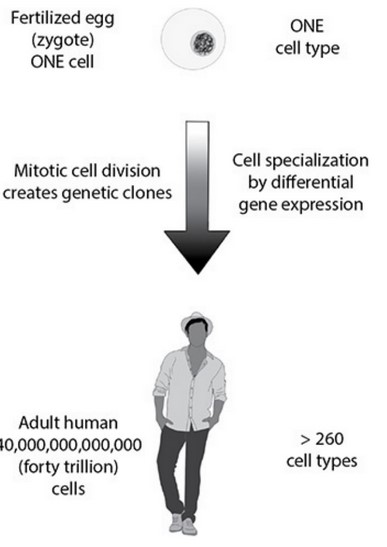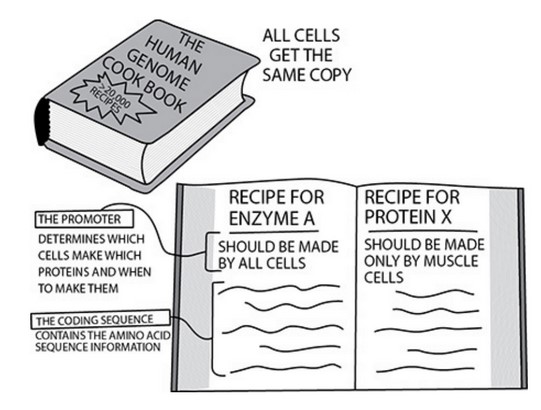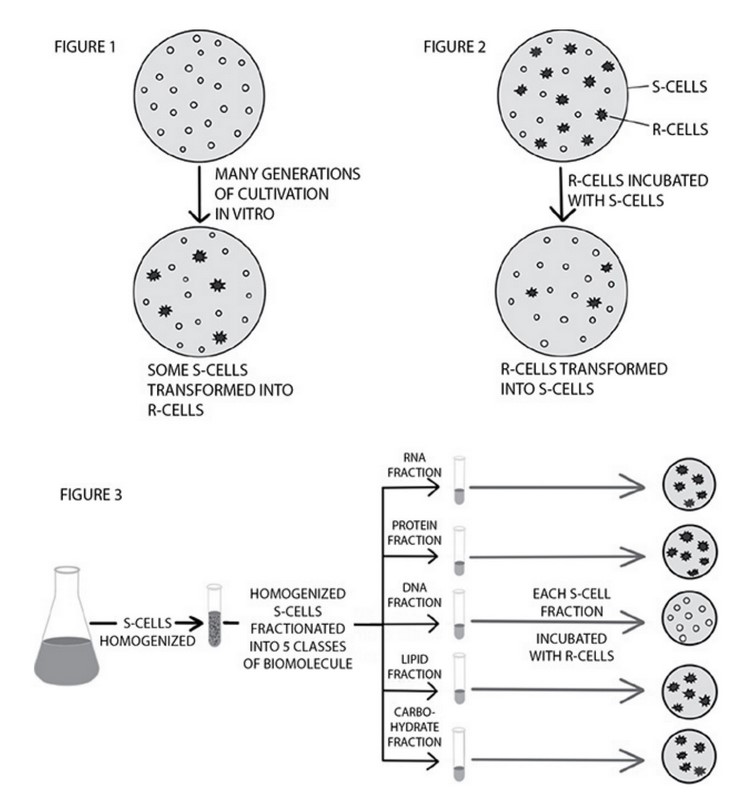Question
Which of the following are proteins in eukaryotes that bind to regulatory switches and upregulate gene expression?
(A) activators
(B) repressors
(C) transcription factors
(D) mediators
▶️Answer/Explanation
Ans:
(A) Activators are proteins in eukaryotes that bind to regulatory
switches and upregulate gene expression. Choice (B) is incorrect
because repressors downregulate gene expression. Transcription factors
help RNA polymerase bind to the promoter and do not bind to
regulatory switches, so choice (C) is incorrect. Mediators are proteins
that allow communication between the regulatory proteins involved in
gene expression; they do not bind to regulatory switches, so choice (D)
is incorrect.
Question
Not every change in the DNA sequence results in a change in the amino acid sequence of a protein. Which of the following explains this?
(A) Each organism lives in a different environment, which changes
the expression of its genes.
(B) The genetic code is redundant, and more than one codon codes for
most amino acids.
(C) The proofreading function of ribosomes corrects changes in the
DNA sequence.
(D) Differential gene expression adapts to these changes in the DNA
sequence.
▶️Answer/Explanation
Ans:
(B) The genetic code contains more than one codon for most amino
acids, so a change in a codon does not necessarily result in a change in
the amino acid for which it codes. While changes in the environment
can affect the expression of genes, the statement in choice (A) does not
explain why changes in the DNA sequence may not result in changes in the amino acid found in the final protein. Thus, choice (A) is incorrect.
Ribosomes do not have a proofreading function, so choice (C) is
incorrect. Differential gene expression results in cell differentiation but
not changes in the DNA sequence, so choice (D) is incorrect.
Question
Which of the following does not affect the phenotype of an organism?
(A) the genes that are expressed
(B) the level at which genes are expressed
(C) the timing of gene expression
(D) the number of genes in the organism
▶️Answer/Explanation
Ans:
(D) The phenotype of an organism is determined by the genes that are
expressed, the level of expression of those genes, and the timing of the
expression of those genes. The phenotype is not affected by the number
of genes in the organism, so choice (D) is the only choice that does not
affect the phenotype of an organism.
Question
Which of the following statements is incorrect concerning gene expression in multicellular organisms?
(A) The DNA sequences are the same in each cell, but the
expression pattern is different for each kind of cell.
(B) Different cell types (e.g., liver and muscle) contain different
proteins.
(C) All the cells of a multicellular organism contain the same genes,
but each cell type differs in the regulatory sequences that control
the expression of the genes.
(D) Promoters are regions of DNA that help regulate gene
expression.
▶️Answer/Explanation
Ans: C
Gene expression commonly refers to the processes of transcription
AND translation, though technically, a gene has been expressed once it’s
been transcribed. In a multicellular organism, ALL cells have the same
genome (with some exceptions) because they were produced by mitosis, the
type of cell division that produces a genetic clone of the replicating cell.

The regulatory sequences of DNA are made of nucleotides, just like the
genes. When a newly formed cell gets a copy of the genome during mitosis, it
receives a nearly identical copy of genes and regulatory sequences to the
parent cells (there may be a few base-pair substitution mutations from
uncorrected DNA polymerase mistakes).
Question
Refer to a series of experiments involving the bacteria Streptococcus pneumoniae (pneumococcus). There are two strains of S. pneumoniae, the pathogenic S-strain and the harmless R-strain. The S- cells have a smooth appearance due to the presence of a polysaccharide capsule surrounding the cells. The R-cells appear rough because they lack the polysaccharide capsule. In the first experiment, mice were injected with one of four different solutions containing living R-cells (group 1), living S-cells (group 2), heat- killed S-cells (group 3), or heat-killed S-cells mixed with living R-cells (group 4). The results are given in the following table.
Figure 1 illustrates the results of many generations of cultivation of S. pneumoniae in vitro. Some S-cells lose the ability to make the
polysaccharide capsule, transforming them into R-cells (Figure 1). In a separate observation, R-cells grown with S-cells were transformed into
S-cells (Figure 2). The procedure and results of an experiment to identify the class of biomolecule responsible for the transformation of R-cells into S-cells is shown as follows in Figure 3. S-cell homogenates were fractionated into RNA, protein, DNA, lipid, and carbohydrate components. R-cells were incubated in one of the five fractions.
Which of the following is the most accurate conclusion based on the initial transformation of the nonpathogenic R-cells into S-cells (Figure 2)?
(A) DNA is the genetic material.
(B) Mutations can be beneficial to bacteria.
(C) S-cells contain molecules that carry heritable information.
(D) R-cells incubated with S-cell extracts become resistant to
antibiotics.
▶️Answer/Explanation
Ans: C
The initial transformation of S-cells into R-cells occurred because S-
cells carry molecules that contain heritable information. The nature of the
molecule could not be determined from the transformation results alone (why
choice A is incorrect).
Although a random mutation could be beneficial to bacteria, the
pathogenicity of the bacteria has no clear benefit or disadvantage in this
experiment (choice B). Choice D is incorrect because no antibiotics were
used in the experiment, so we can’t know if the S-cells are actually resistant
to them.
